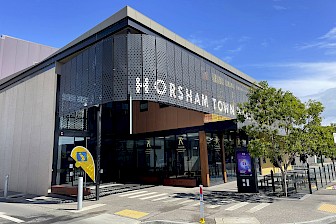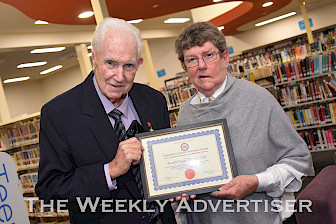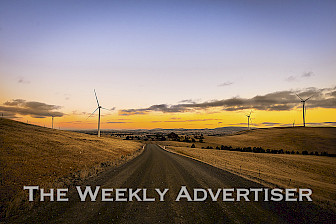He said about $5-billion of projects in the region were ‘in the pipeline at the moment’, with possible future upgrades to power-transmission infrastructure potentially generating another $7-billion.
He said limited power-transmission capabilities were the only thing holding the region back from becoming Victoria’s renewable-power centre.
“We’ve got a real opportunity here to take control of our own energy future,” he said. “I’ve referred to it before as a new gold rush, and we’ve got the ability across the Wimmera and Grampians regions to be generating all of the energy that Victoria needs.
“We’ve got a community that understands that not only do we get a sugar hit when these projects are built in terms of construction dollars coming into our region, but we get the ongoing jobs that come from the maintenance of those facilities and also the security of having power.
“For us to have that as yet another industry to add to our main industry of agriculture is a huge advantage that other areas don’t have; they don’t have the sun, they don’t have the wind and they don’t have the land area.
“We’ve got those things, and once we get the transmission upgrades nothing will stop us.”
Mr Benjamin said the Australian Energy Regulator had committed to funding $350-million of power-transmission upgrades within Victoria.
A proposed electricity interconnector between South Australia and New South Wales with a link to Red Cliffs in northwest Victoria has potential to further enhance the power-distribution capability of the region.
“That transmission upgrade will allow us to generate more energy in the Wimmera and then distribute it into the national grid, so that if we don’t need it we can sell it to the rest of the country, all the way up to north Queensland if that’s where it’s needed,” Mr Benjamin said.
He said other opportunities for reducing emissions could come from innovations such as microgrids.
“Essentially a microgrid is where either a group of businesses or a community decides to generate their own energy and be responsible for their own network,” Mr Benjamin said.
“It is particularly suited to some of our outlying towns, where we might only have one electrical line coming into a community.
“It makes it very easy to have a microgrid where they’re creating and sharing their own power while also still having the fallback of the main grid.
“They also have the ability to push any excess power they generate back into the main grid.
“You could have a renewable project associated with that community – maybe a solar project or wind turbines – that feed into their own grid, and they could export or store any of the excess.”
Mr Benjamin said mosaic farming – a system of land use combining patches of annual cropping interspersed with perennial vegetation – and generating energy from biowaste also presented great potential for the region.
Wimmera Development Association executive director Chris Sounness said the region’s farmers would be at the forefront of a low-carbon future.
“The great thing is that farmers in the region are leading the way with their adoption of no-till farming and cropping with one pass,” he said.
“Opportunities going forward are around exploring how we can use soil carbon to lower emissions.
“There is also potential around biodiversity and environmental offsets.
“Both of them offer opportunities, particularly in poor-performing paddocks, for farmers to lower emissions.”
But Mr Sounness stressed there would need to be a region-wide approach that did not put the onus for lowering emissions solely on farmers.
“With projects like the Murra Warra Wind Farm, often another part of the country might purchase the energy from that wind farm and it is considered to be the place that is lowering its emissions.
“So, for us, it’s about how we can lower emissions by using some of the energy we create behind the grid.
“Rather than exporting it to other regions, how can we use it?
“It is going to be very much a team effort with all aspects of the community involved. Agriculture is going to play its part, but so is every other part of the community.
“The chance is there for us to work collaboratively as a region, because we’re just about the pre-eminent region in Australia for wind-energy opportunities.”
The entire November 13, 2019 edition of The Weekly Advertiser is available online. READ IT HERE!






